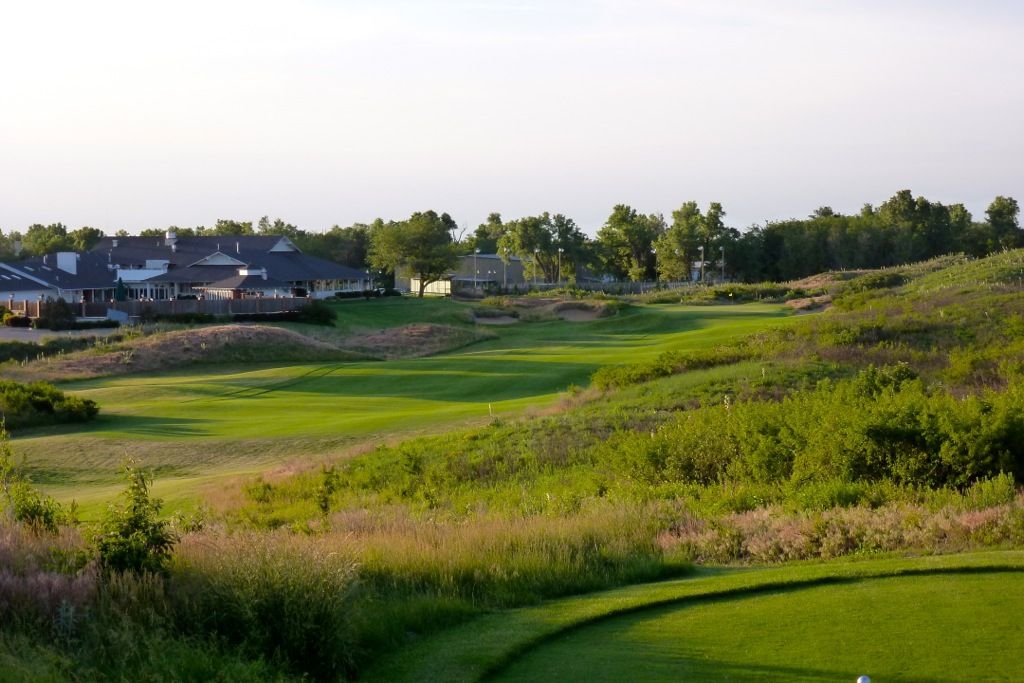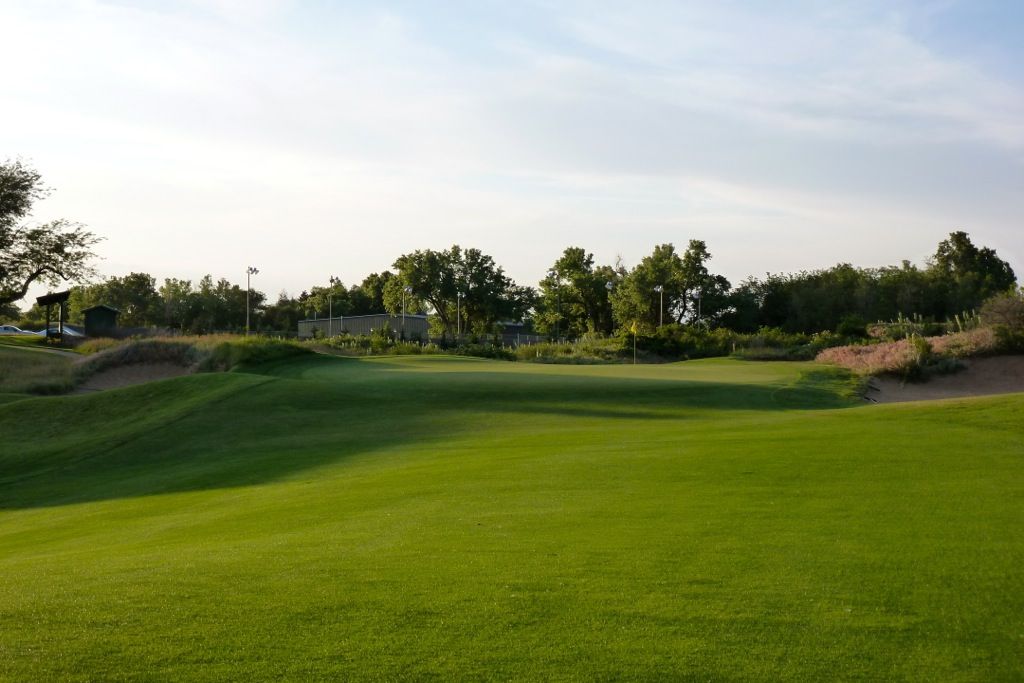Trait 1: Favoring the outside of the dogleg.
It is very rare, at least in my experience, that an approach from the outside of the dogleg is the ideal line into the hole. Though it is not the case on every dog-leg hole that Maxwell designed, in many cases Maxwell would ask the golfer to choose between the inside of the dogleg and a shorter approach, or the outside of the dogleg leaving a longer approach, but a clearer/easier line into the green.
ExamplesPrairie Dunes' 1stPerhaps the best example of this is the 1st at Prairie Dunes, where the shorter line into the green leaves a semi-blind approach over the corner of a dune, while an approach from the outside of the dogleg will leave a clear approach that can be run onto the green.

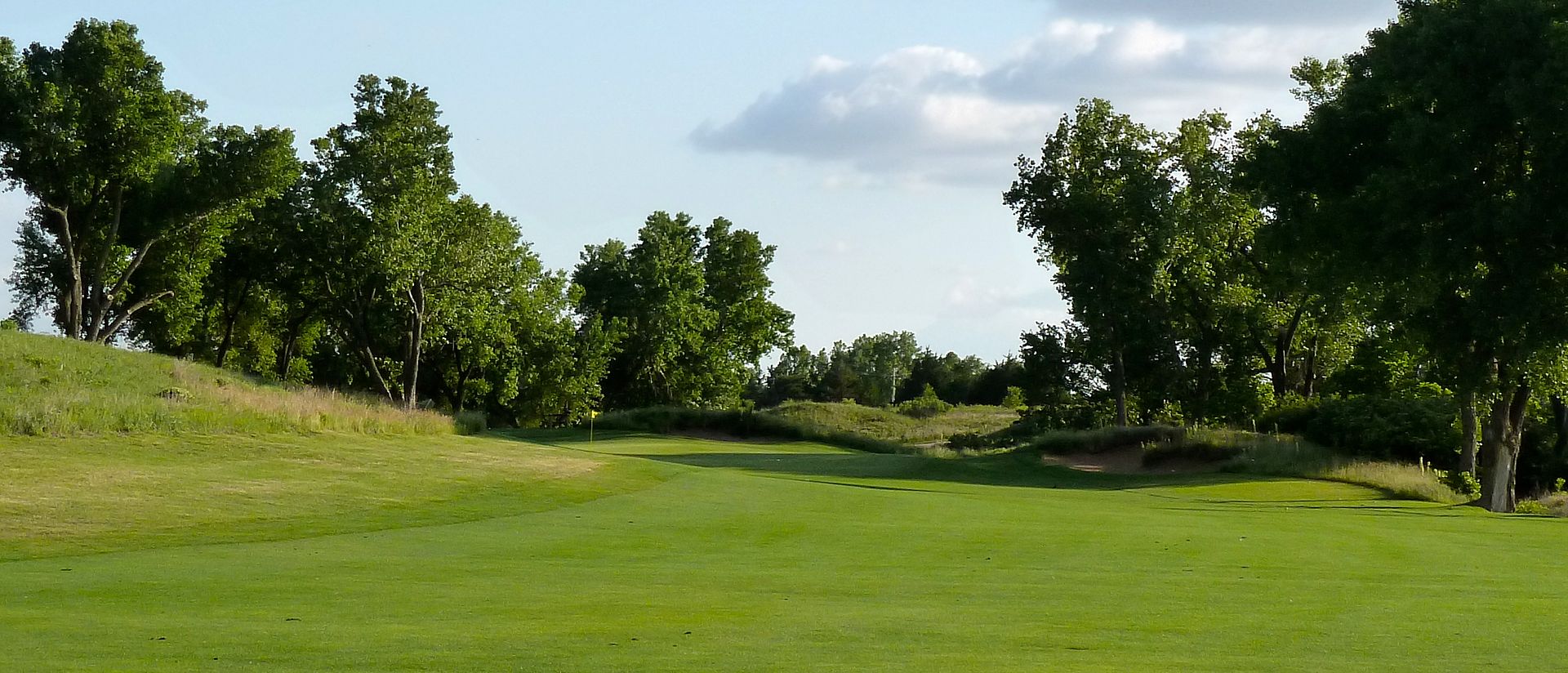
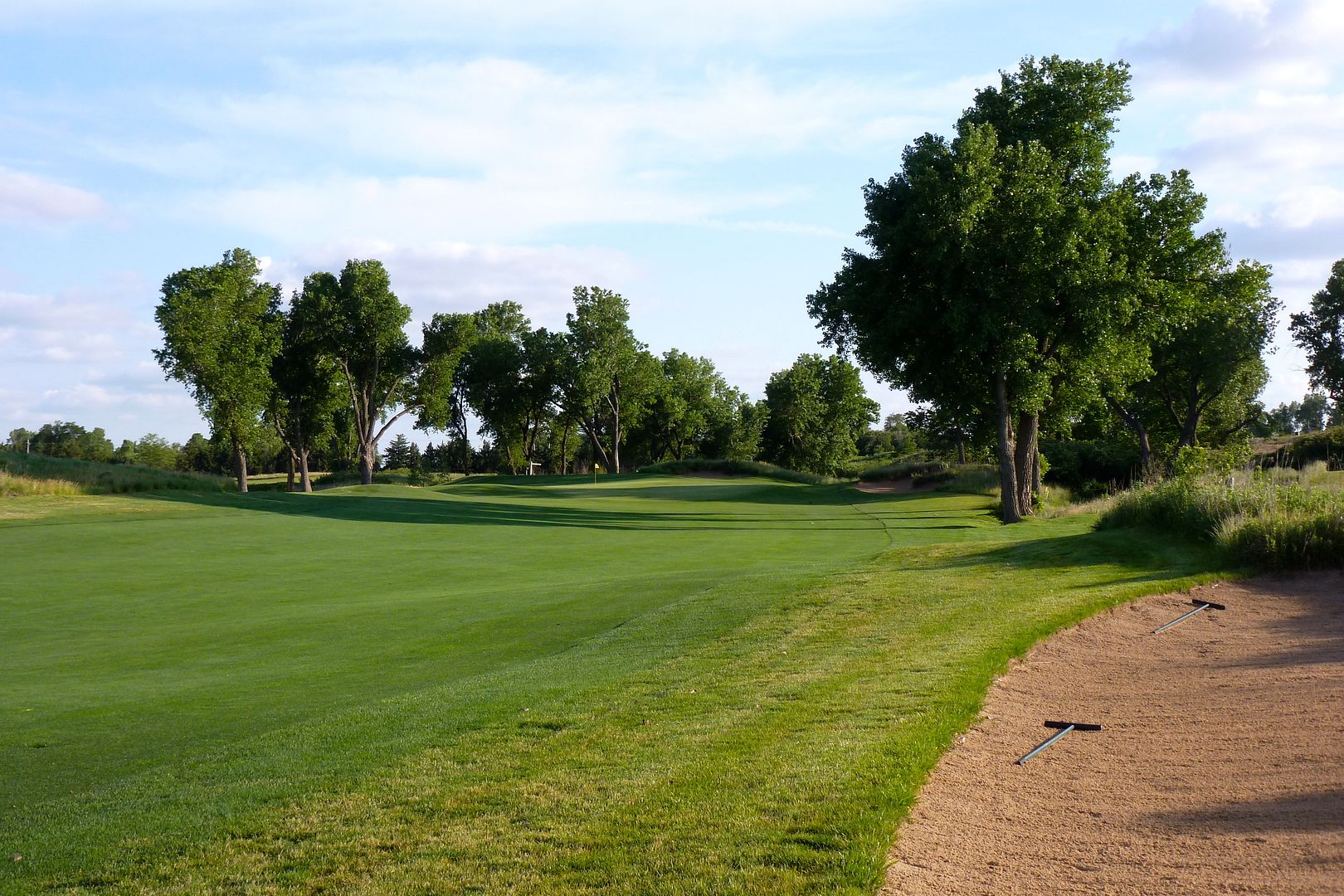 Oklahoma City's 2nd
Oklahoma City's 2ndThere is a very clever/useful feeder slope short/left of the 2nd green. This slope is much more easily accessed from the outside of the dogleg. Further, the approach from the inside of the dogleg is all carry over a deep hollow.

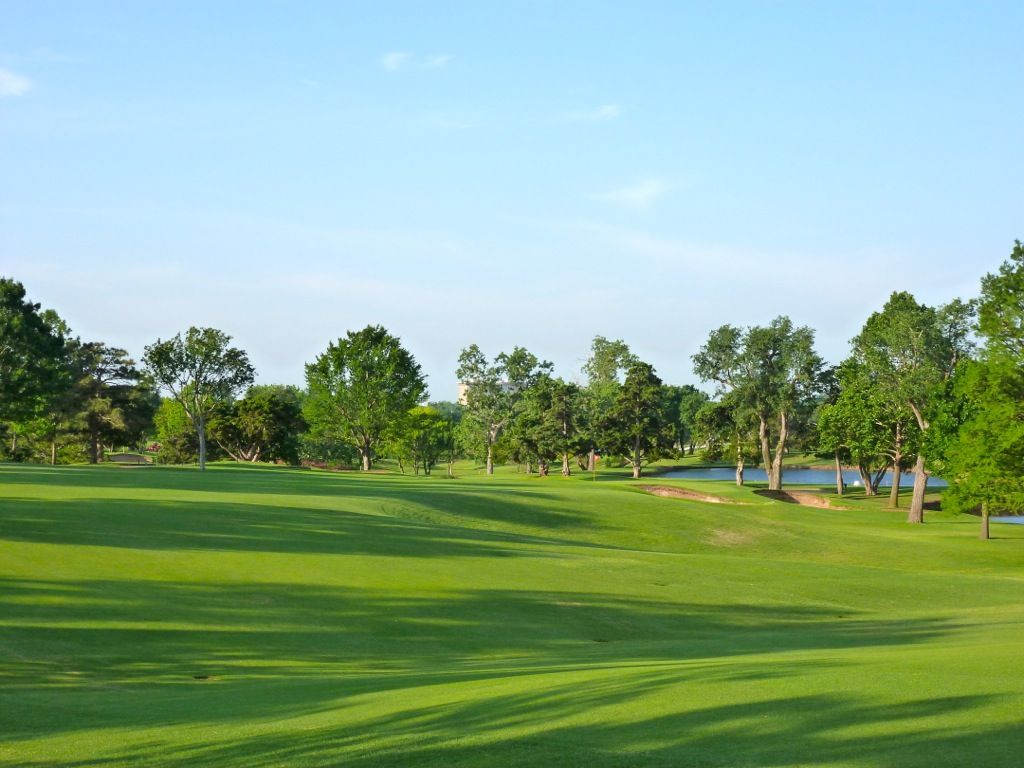 Dornick Hills' 3rd
Dornick Hills' 3rd - green opens up from outside of dogleg.
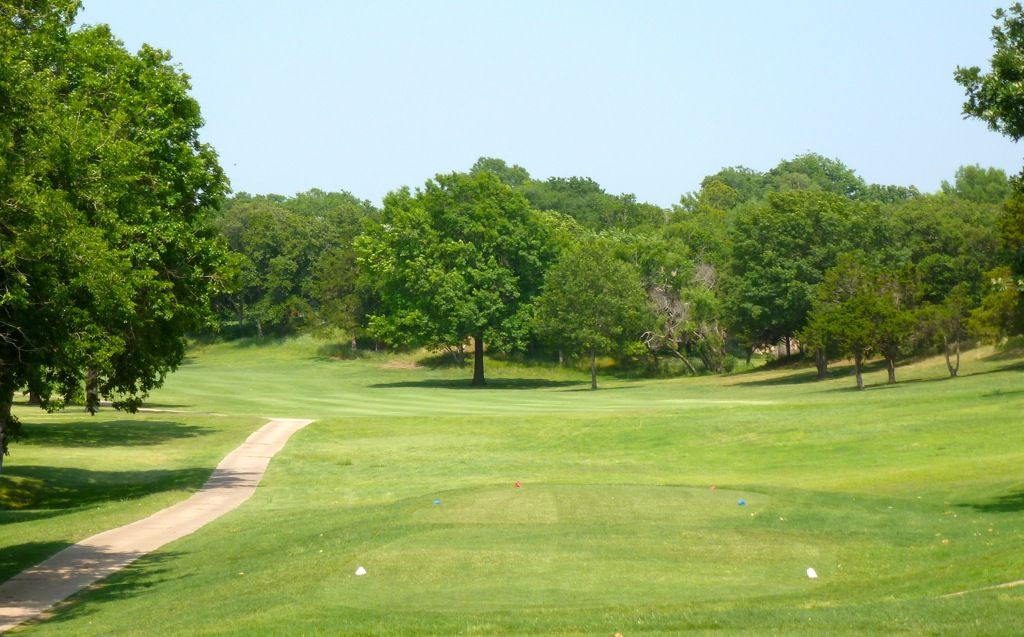
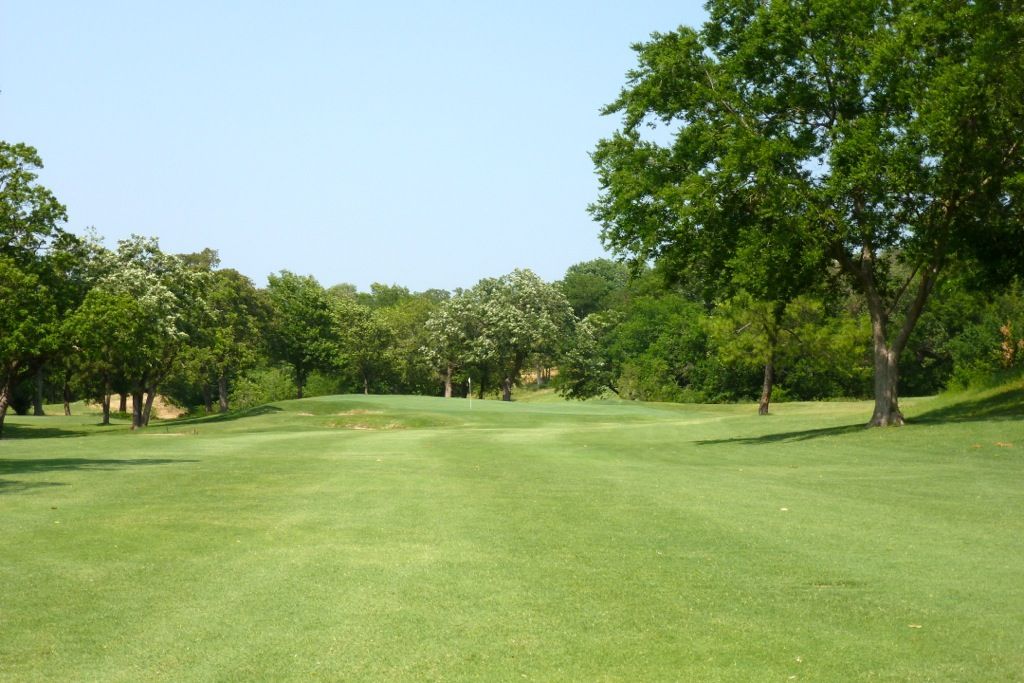
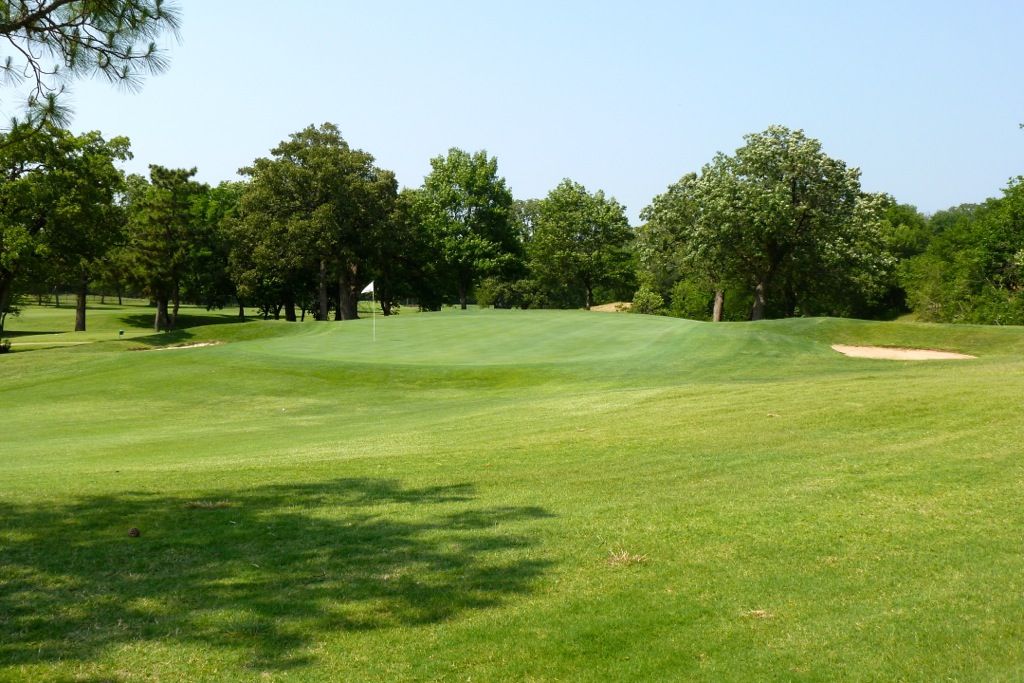 Blackwell's 8th
Blackwell's 8th - green opens up from outside of dogleg
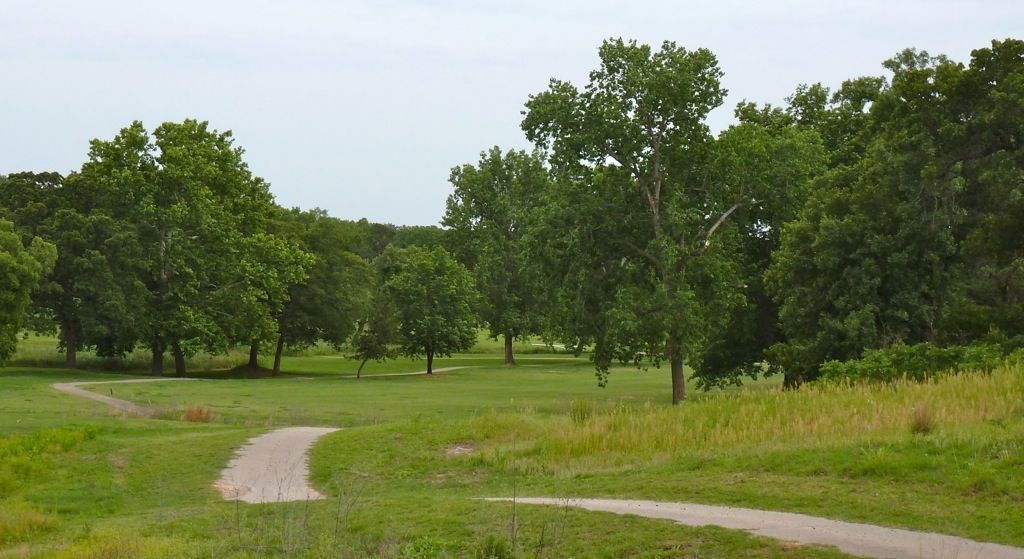
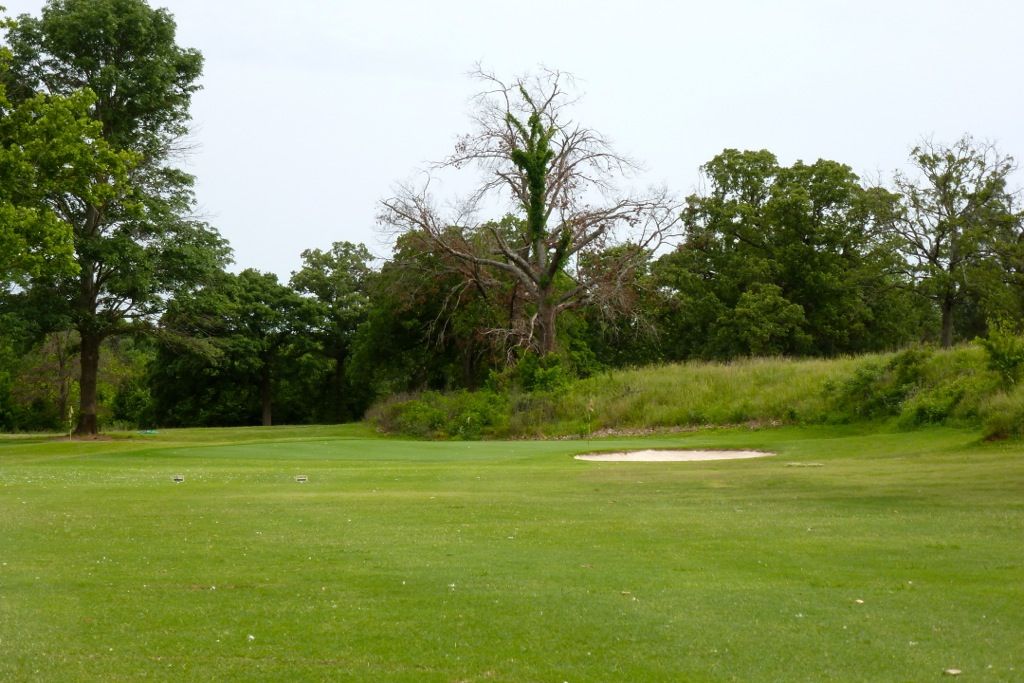 Oakwood CC's 18th
Oakwood CC's 18th [must be imagined without trees] - approach from outside of dogleg is played into, rather than across, the slope of the green.
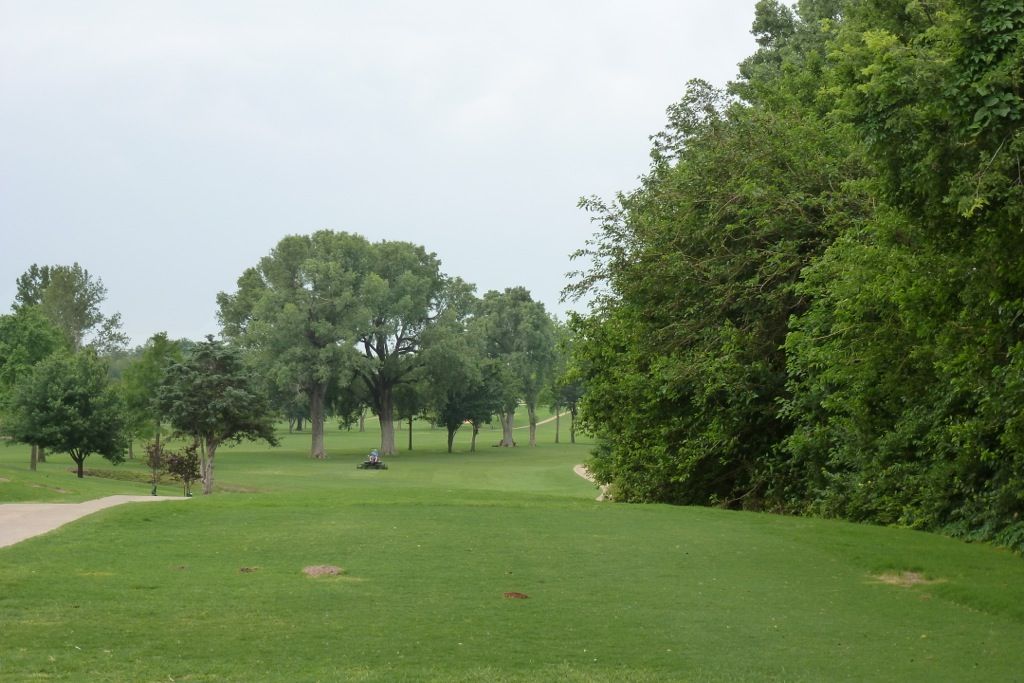
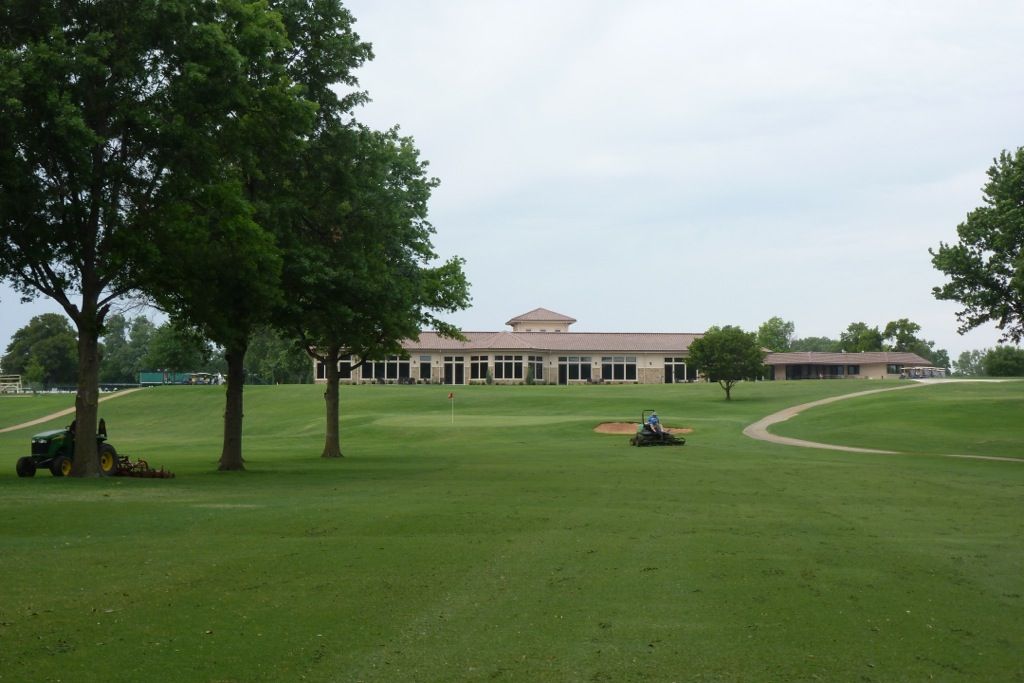 Muskogee's 18th
Muskogee's 18th - green opens up from outside of dogleg.
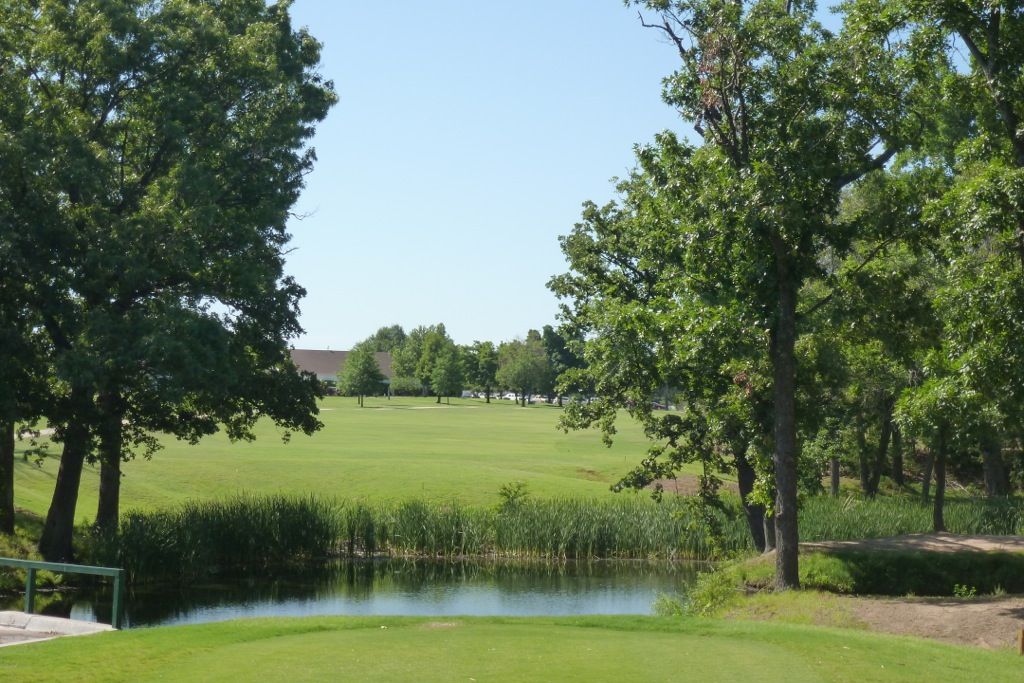
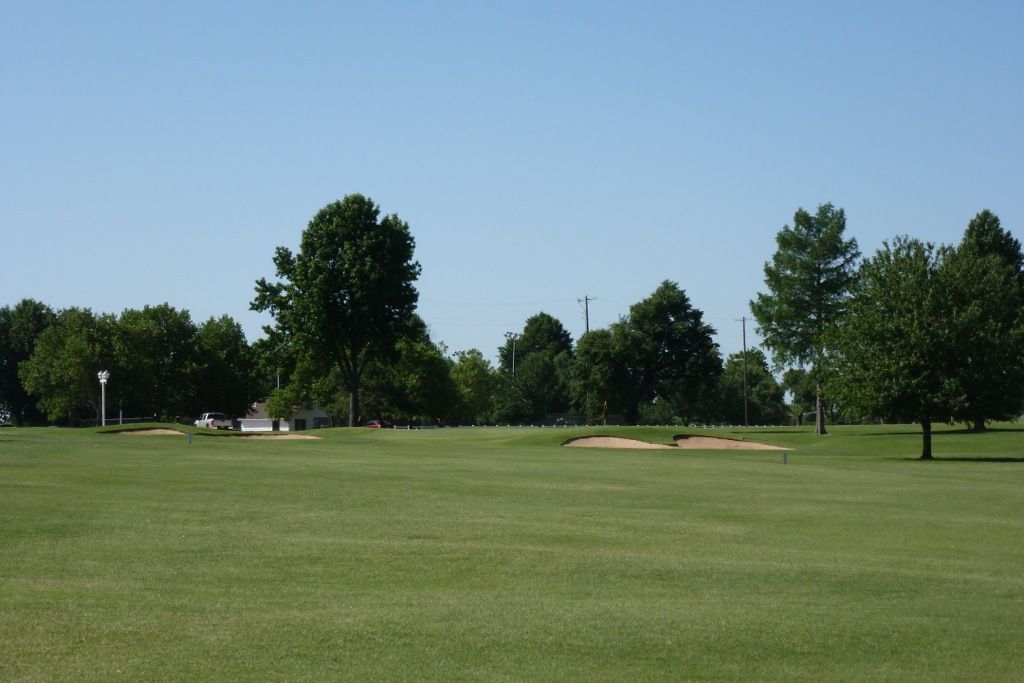 Muskogee's 11th
Muskogee's 11th - green opens up from outside of dogleg
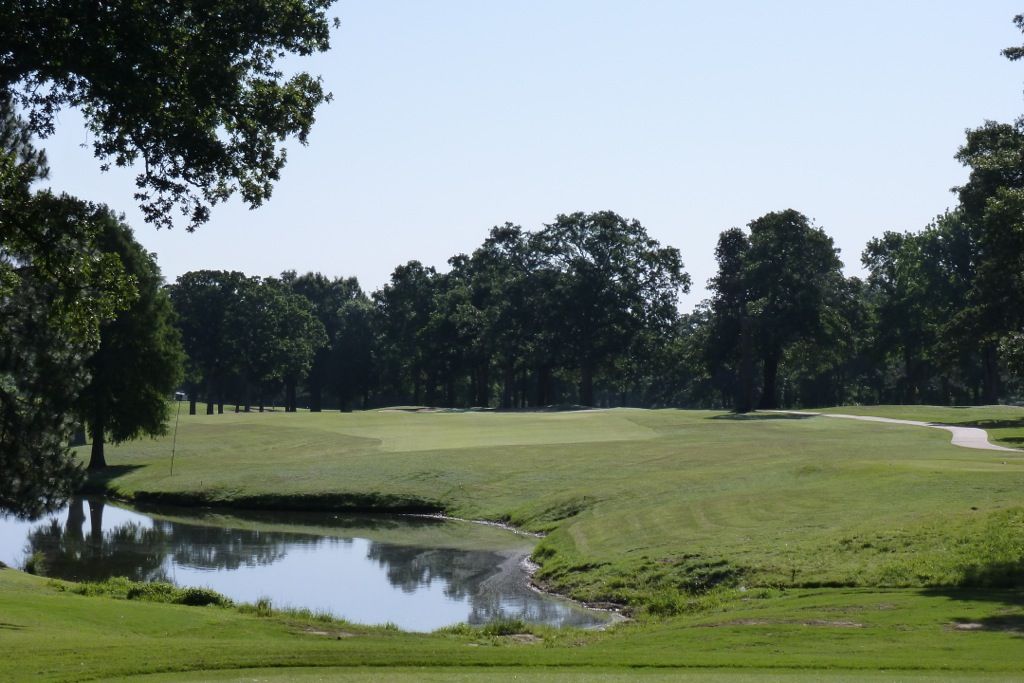
 Oklahoma City's 9th
Oklahoma City's 9th - A perfect example.
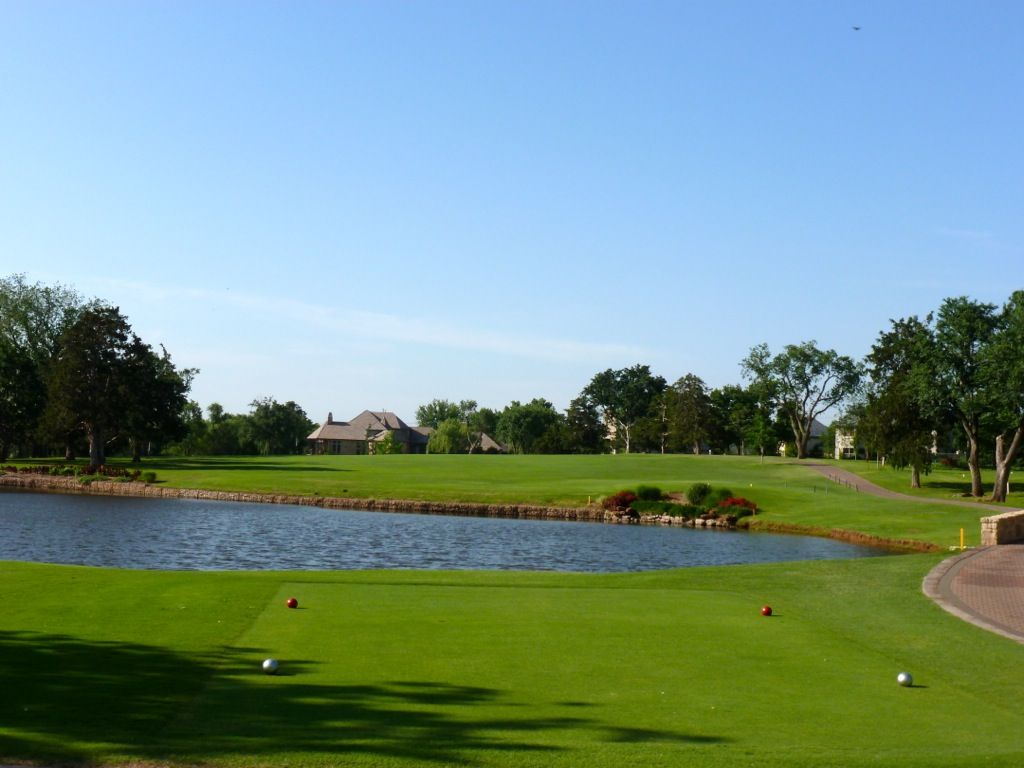
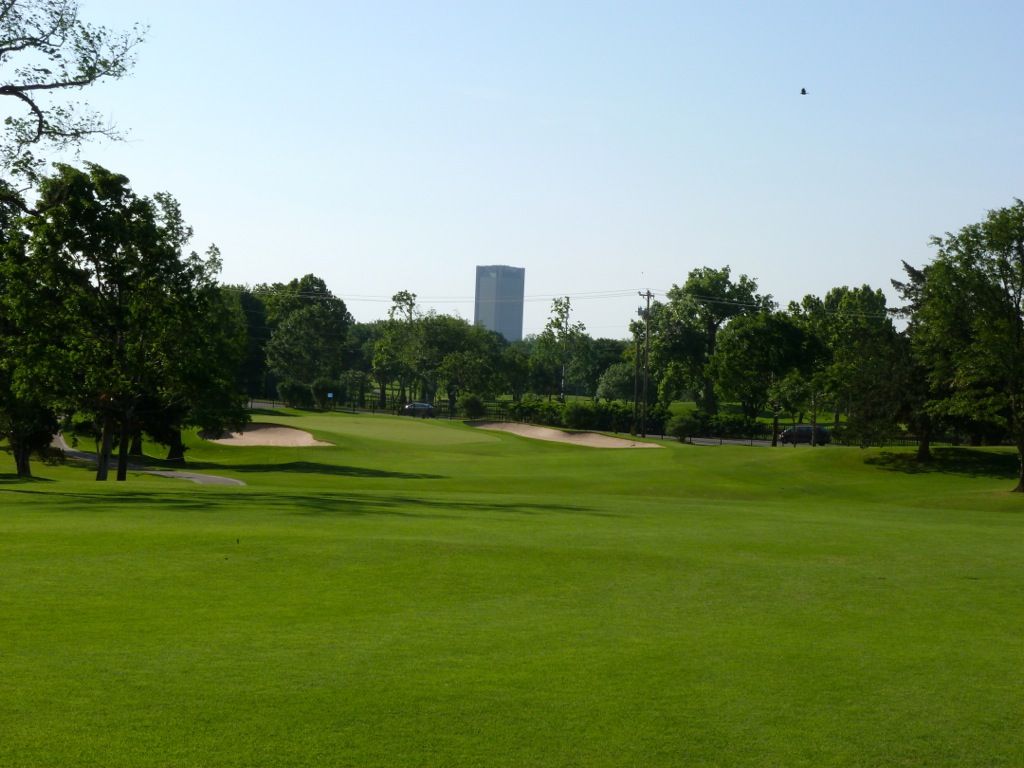 Southern Hills' 2nd
Southern Hills' 2nd - Clear line into green and avoids the visual deception created by the short bunker on the left.
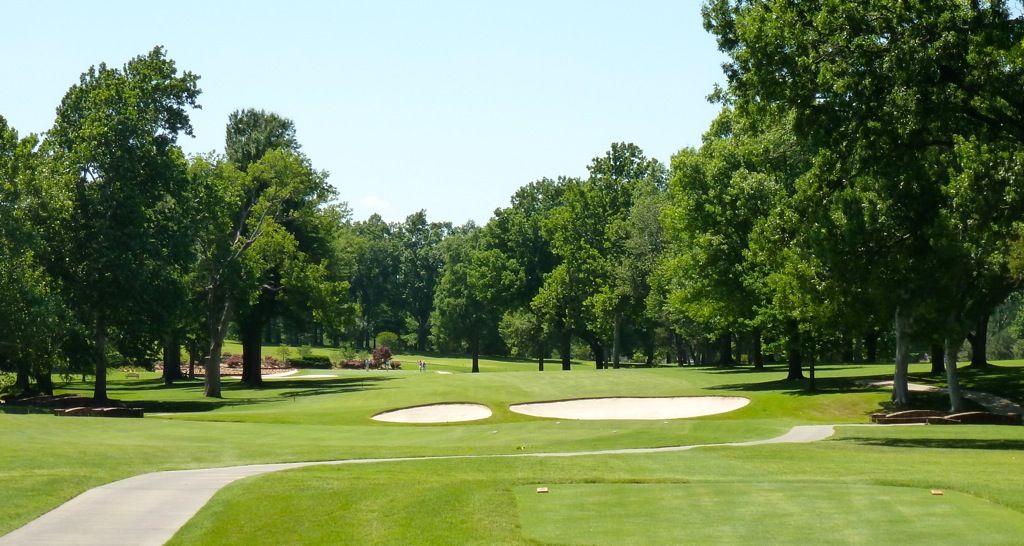
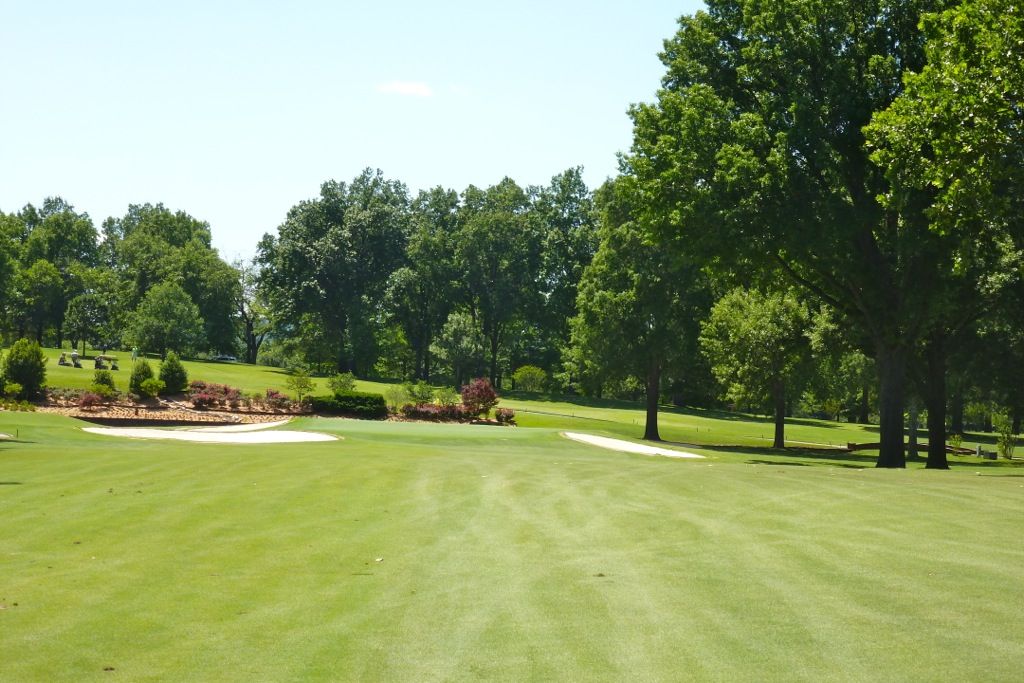 Twin Hills' 9th
Twin Hills' 9th - Another great example. Green opens up from outside of dogleg and approaches from this angle are more easily stopped because of slope of green. Added trees have increased the penalty for being on the inside of the dogleg.
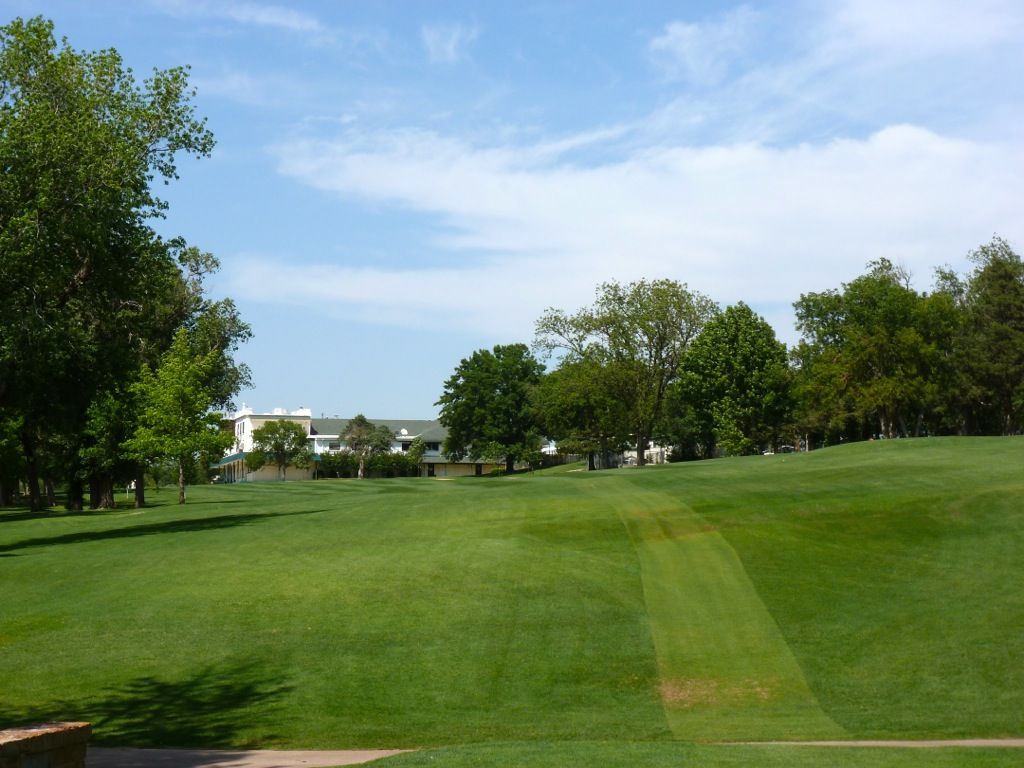
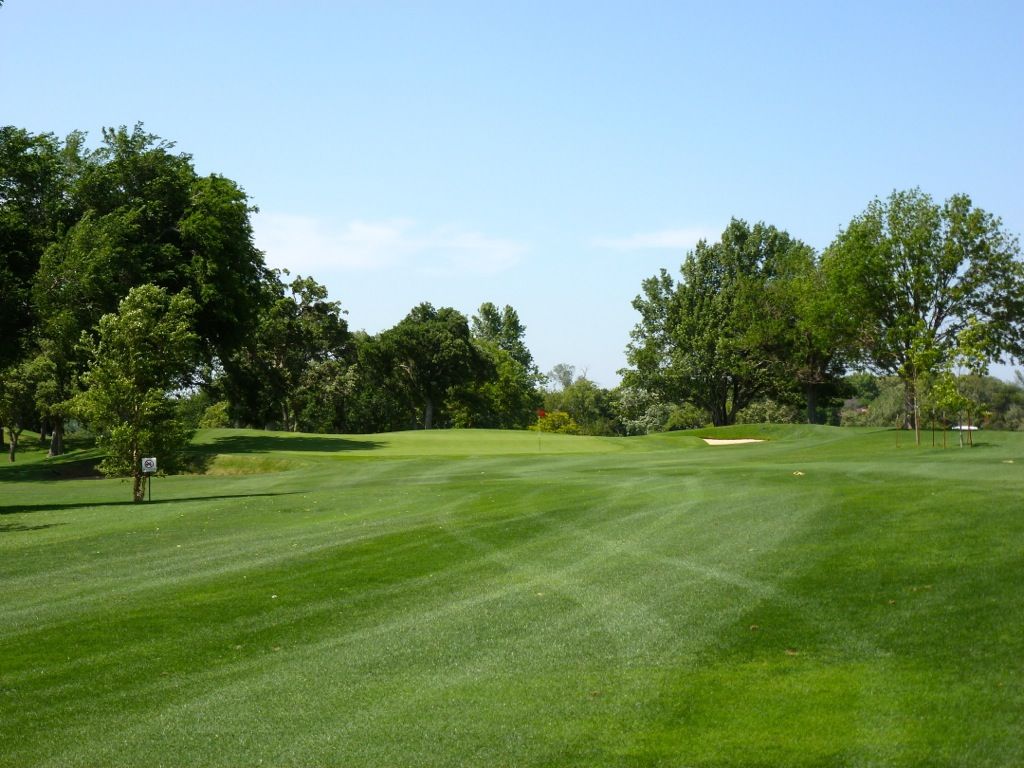 Southern Hills' 12th
Southern Hills' 12th - Not only is this one of the Nation's great par-4s, but it is also a great example of this Maxwell trait. While approaches from the left are shorter, approaches from the right have a clearer view of the green and are played into its slope.
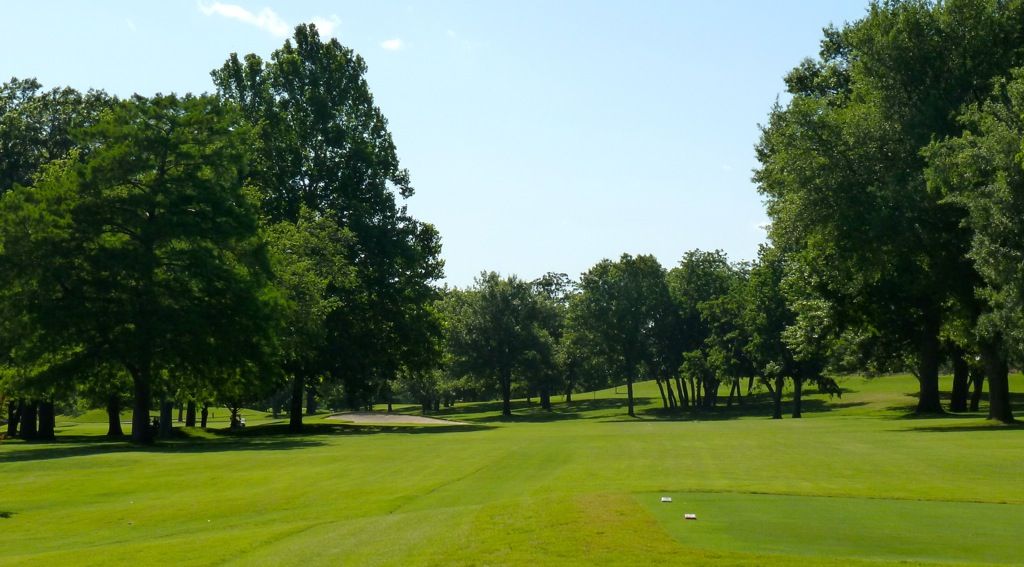
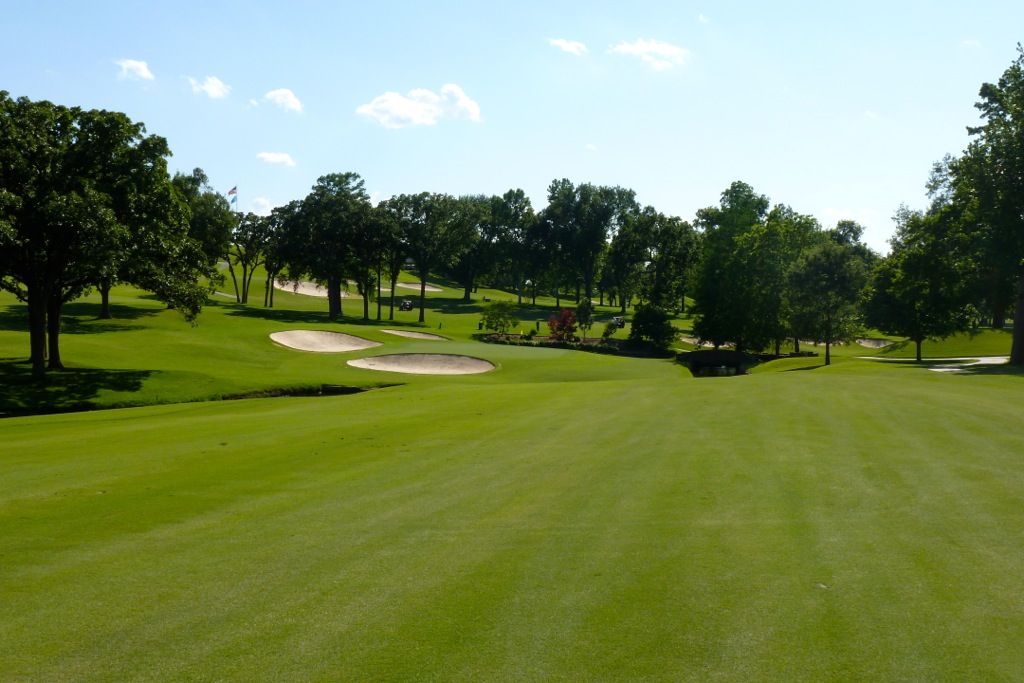 Twin Hills' 17th
Twin Hills' 17th - Approaches from the inside of the dogleg leave a semi-blind approach over bunkers, while approaches from the outside leave a clearer view.
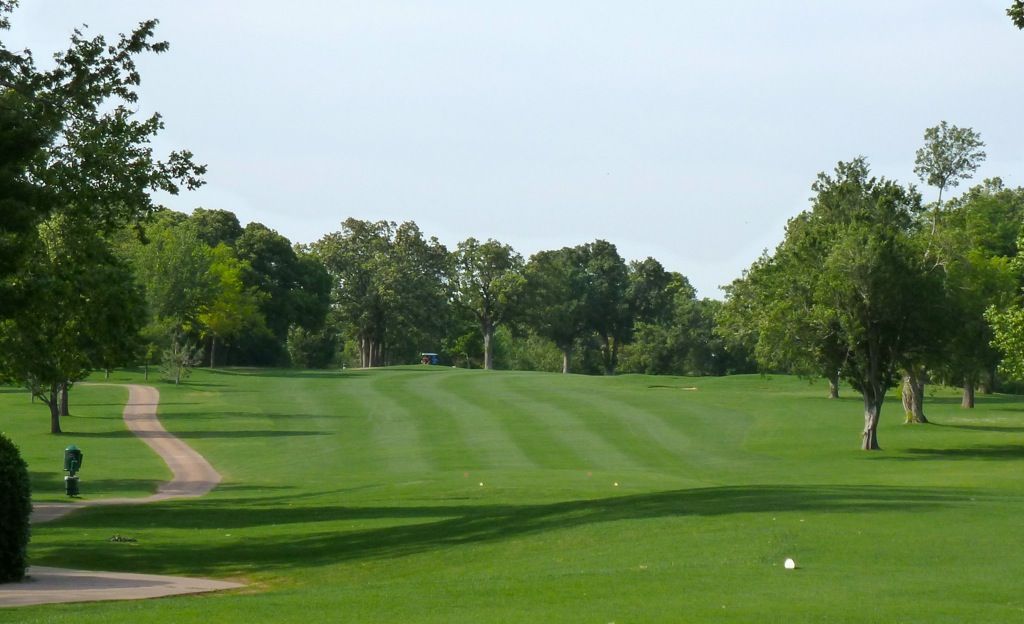
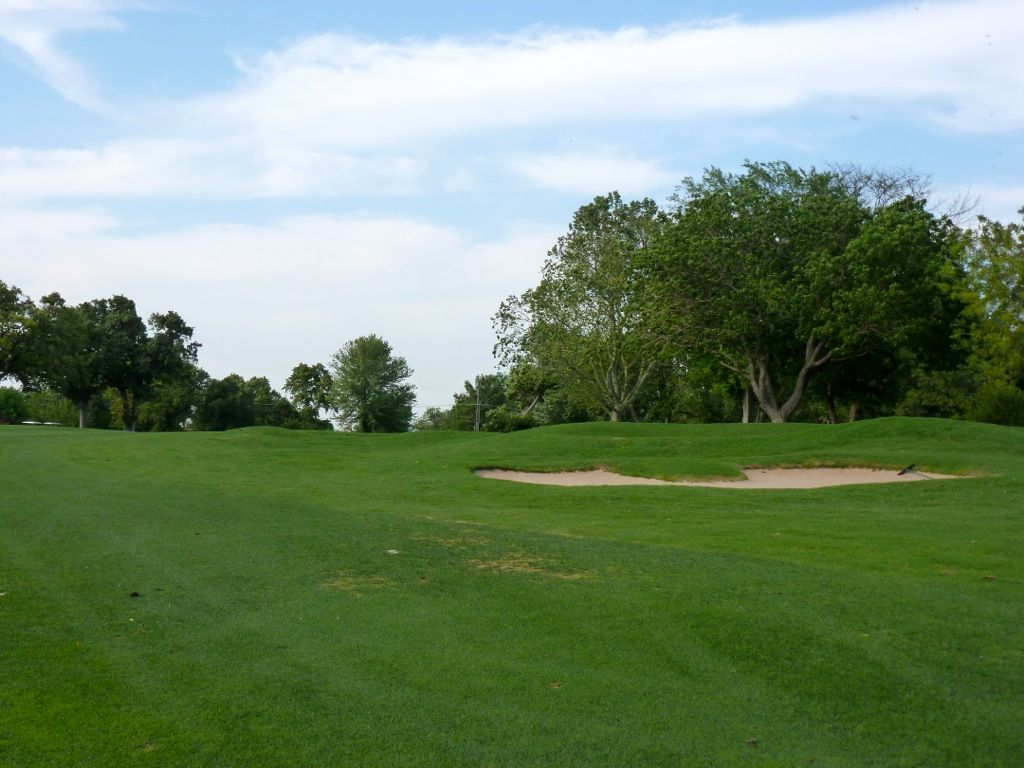
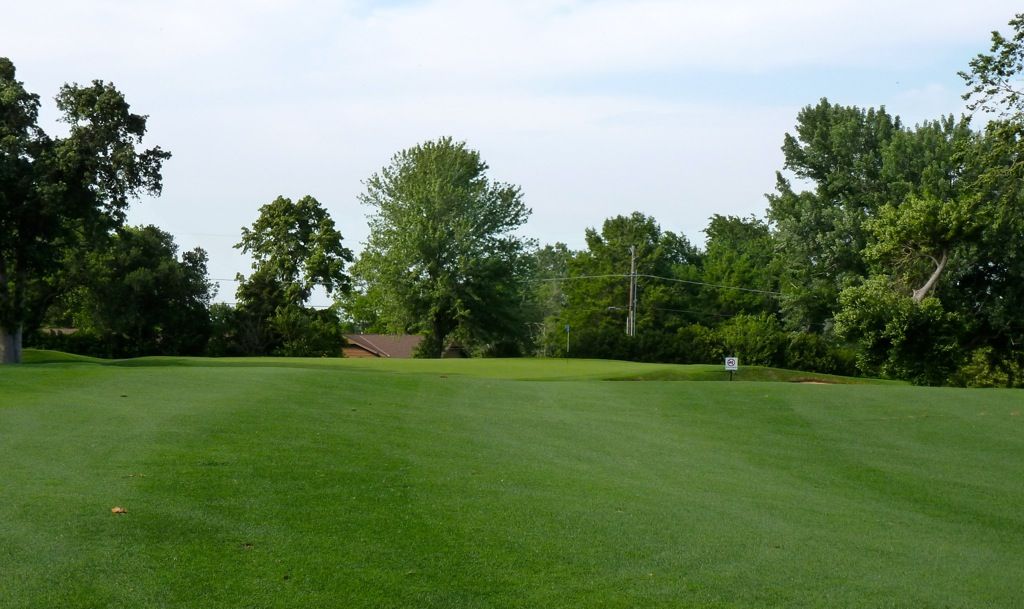 Twin Hills' 18th
Twin Hills' 18th - Approaches from the inside of the dogleg must be played over the deep fronting green side bunker.
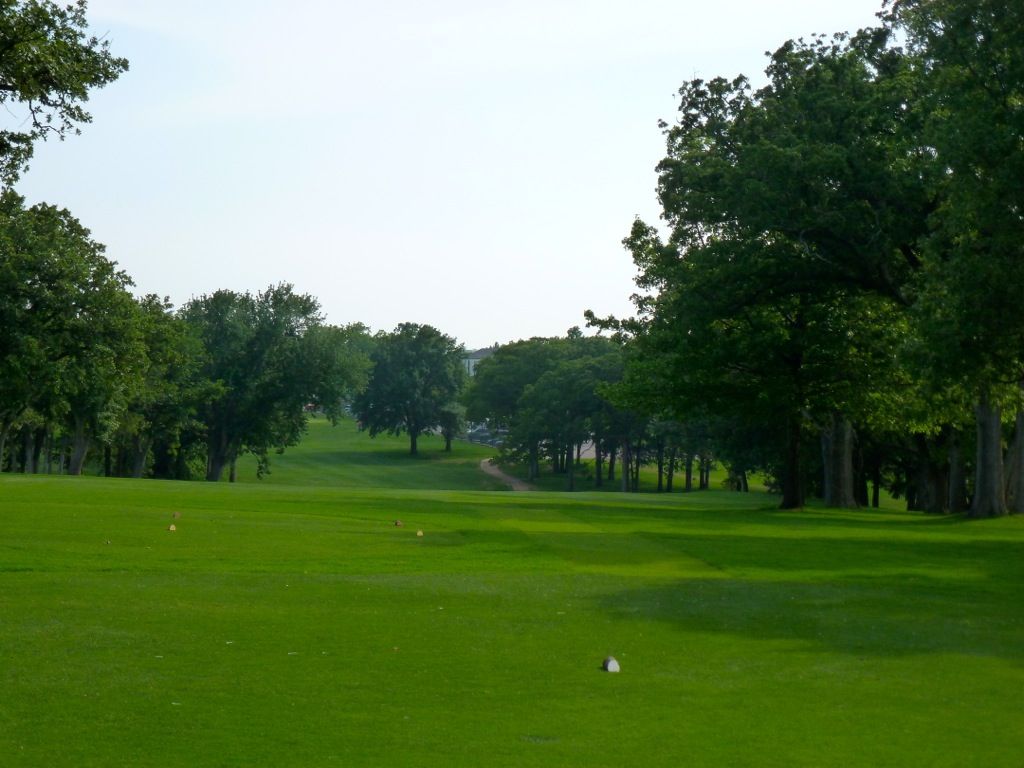
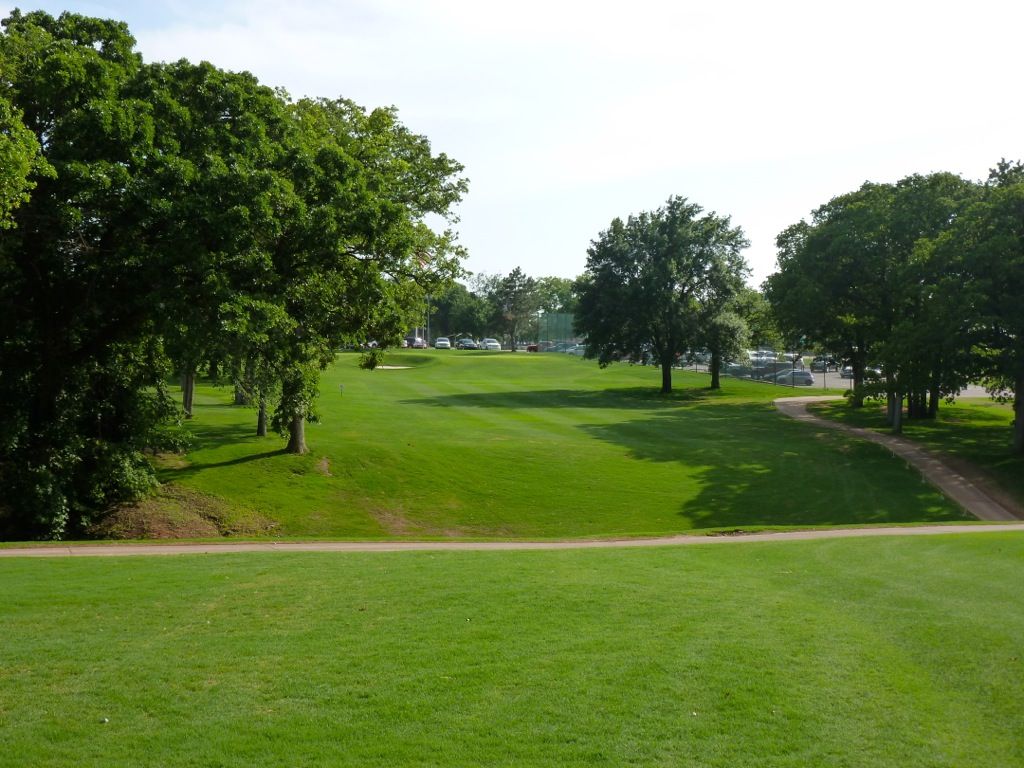
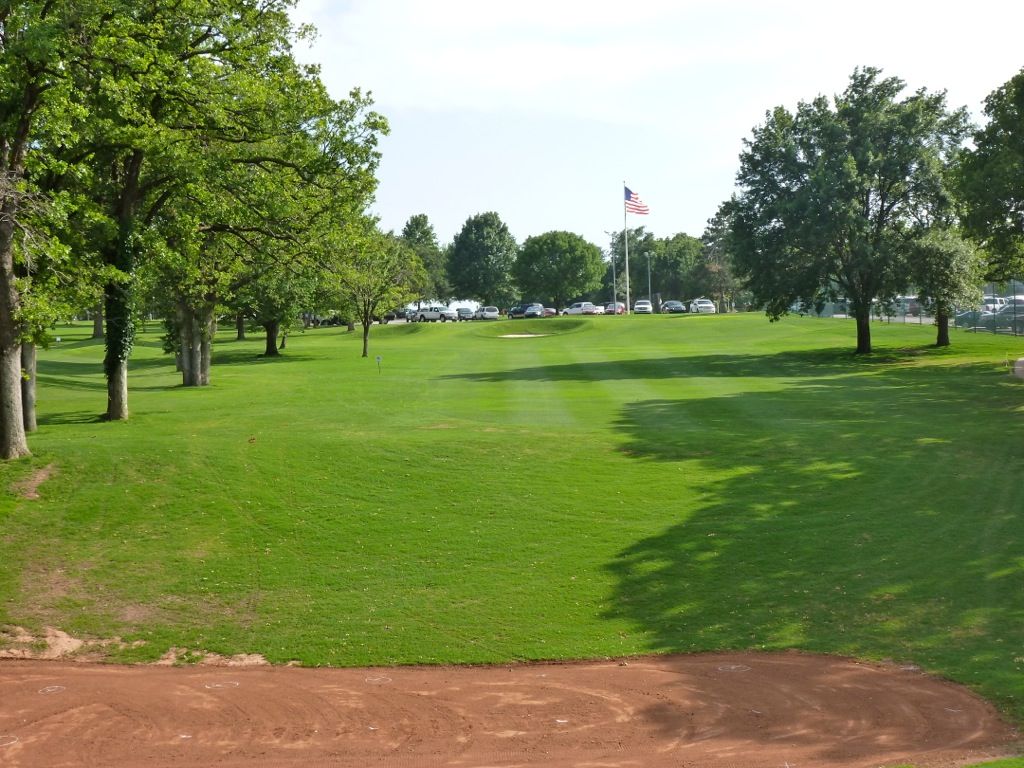 Twin Hills' 10th
Twin Hills' 10th - Approaches from the inside must be played over a deceptive fairway bunker while approaches from the outside have a clear look at the green.
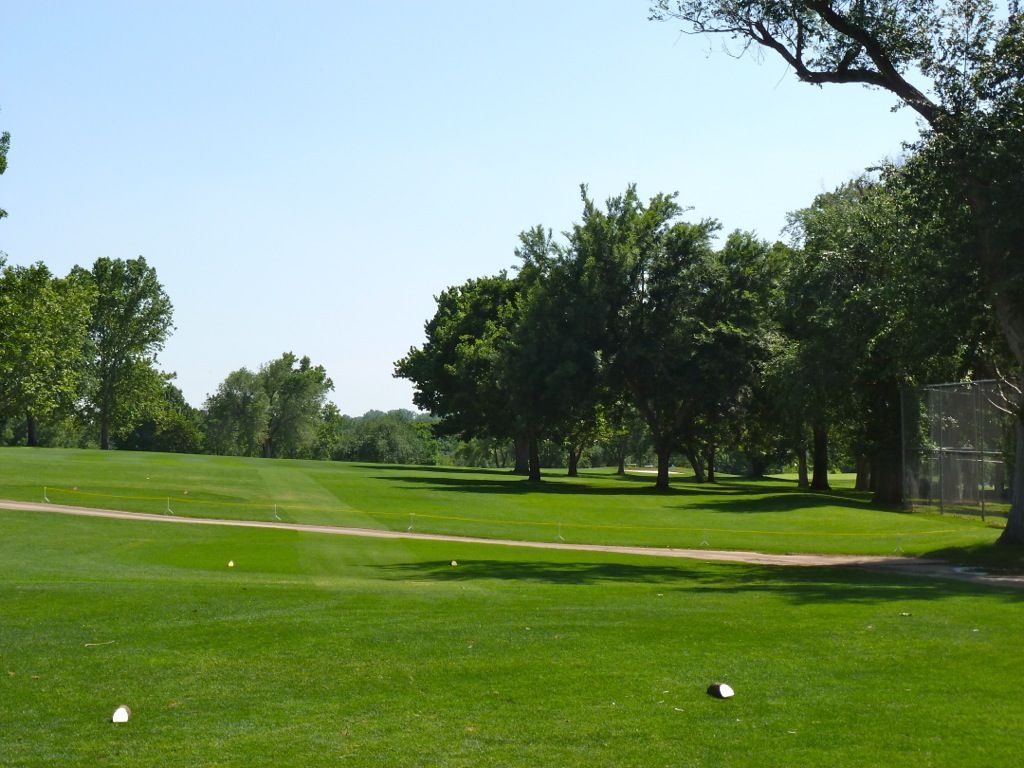

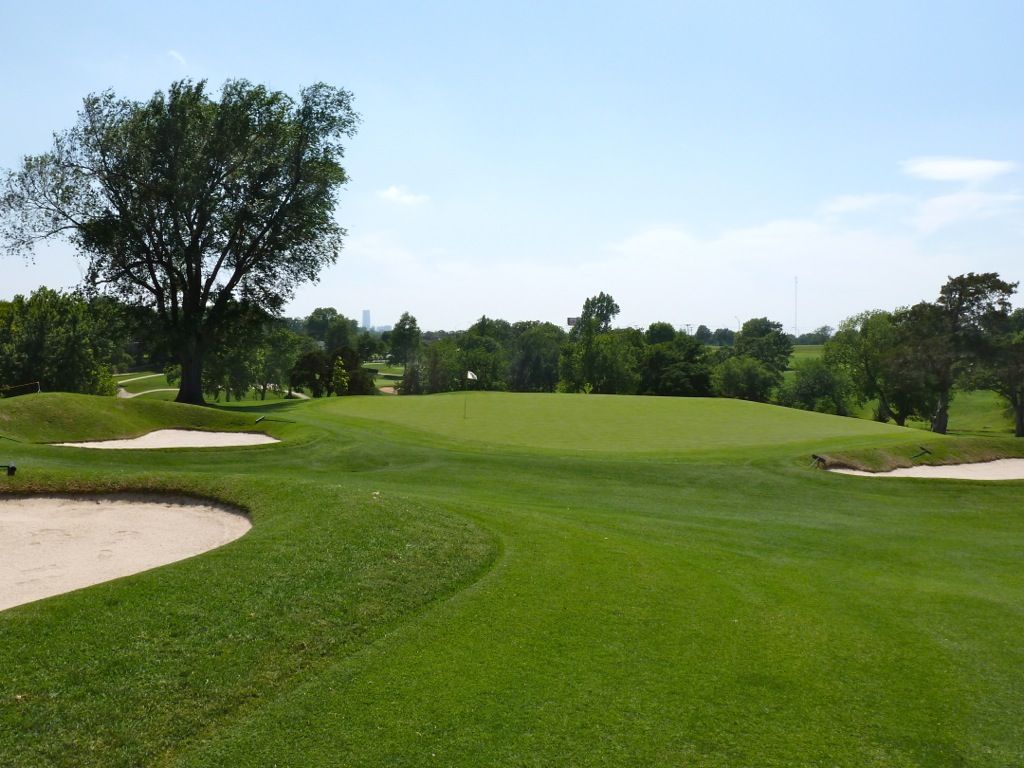 Prairie Dunes' 3rd
Prairie Dunes' 3rd [I know this is a Press hole and ditto 11, 13 and 16, but I know at least some think this was Perry's routing...]
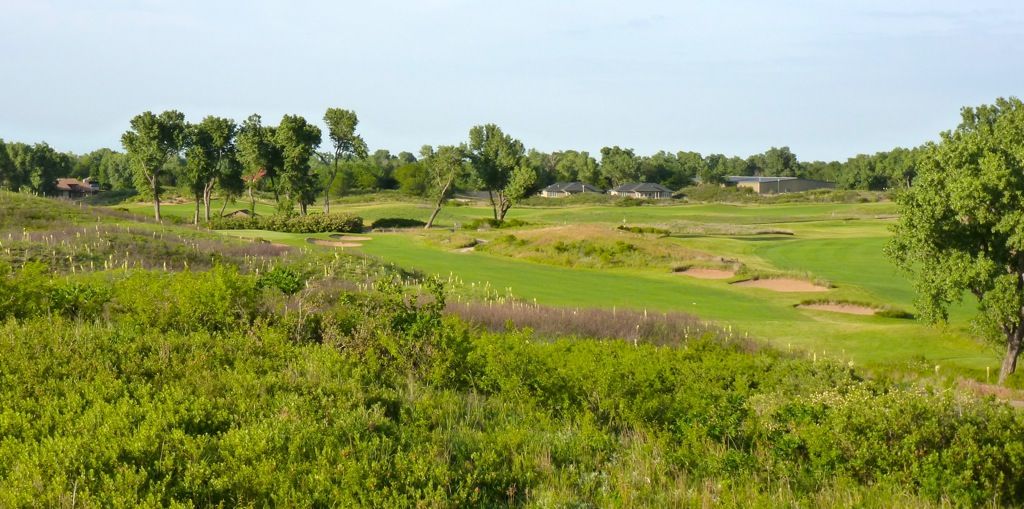
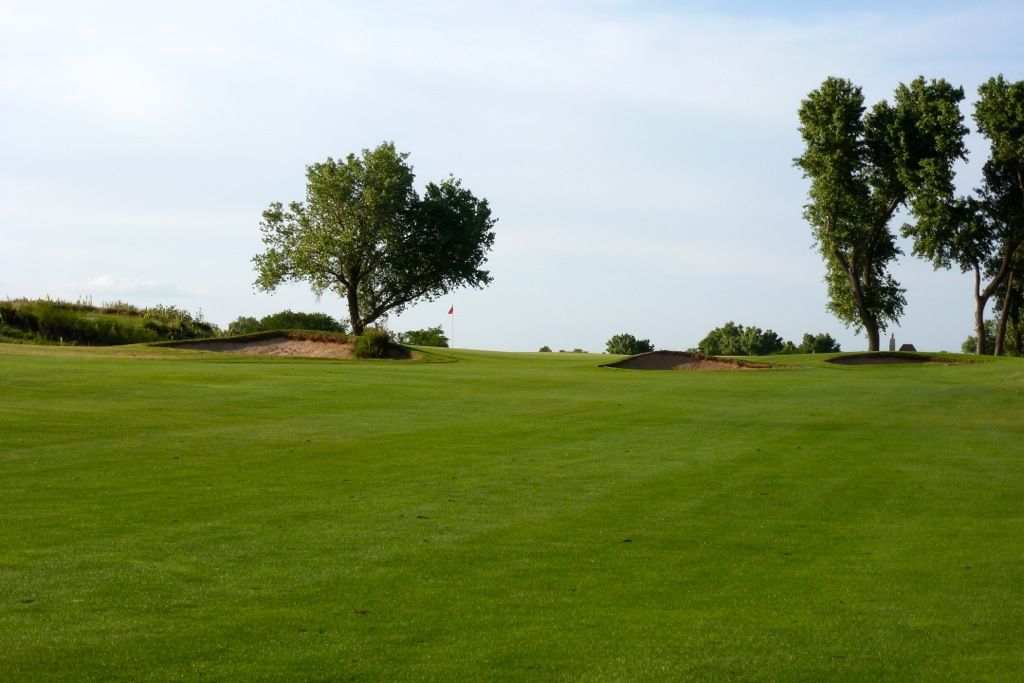 Prairie Dunes' 7th
Prairie Dunes' 7th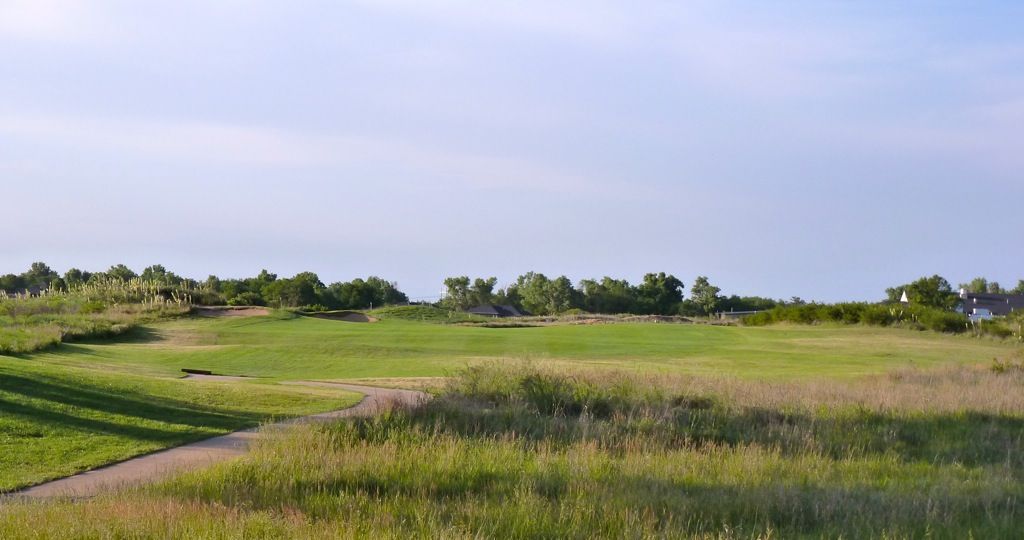
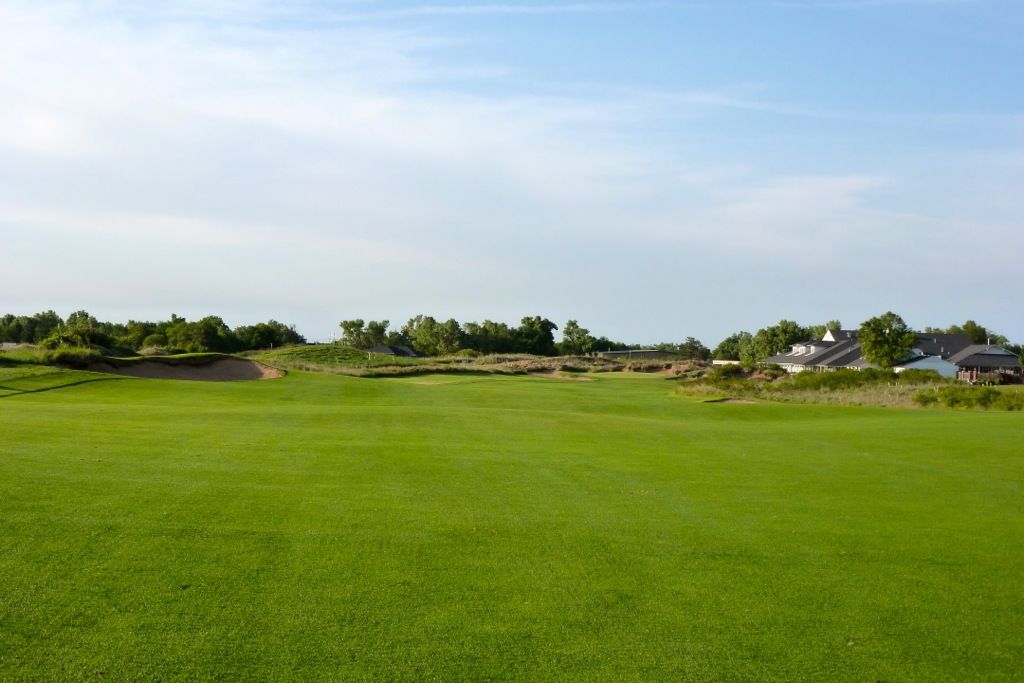 Prairie Dunes' 11th
Prairie Dunes' 11th - Blind/shorter vs. clear view
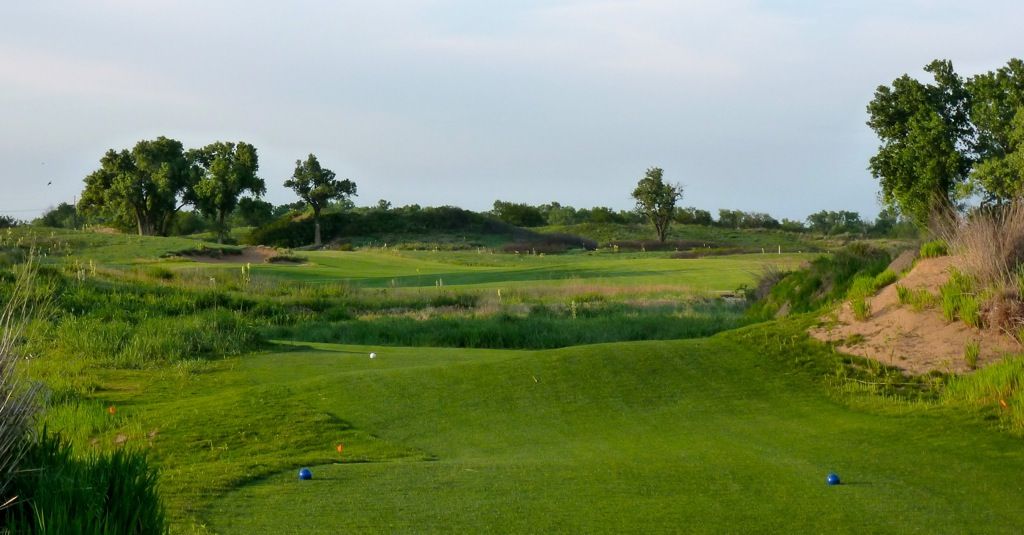
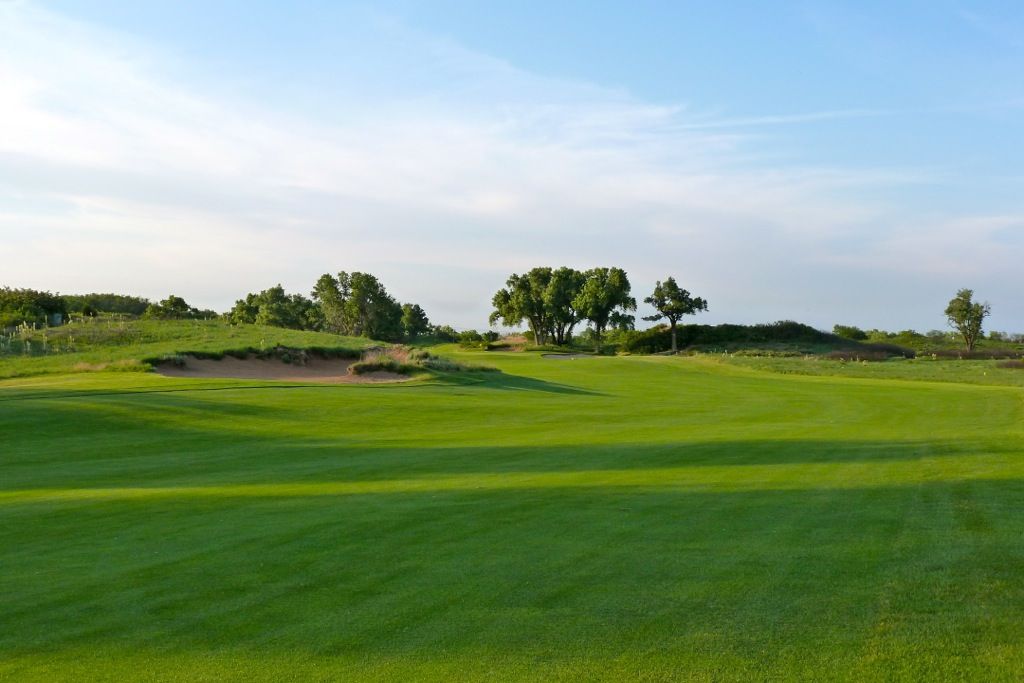
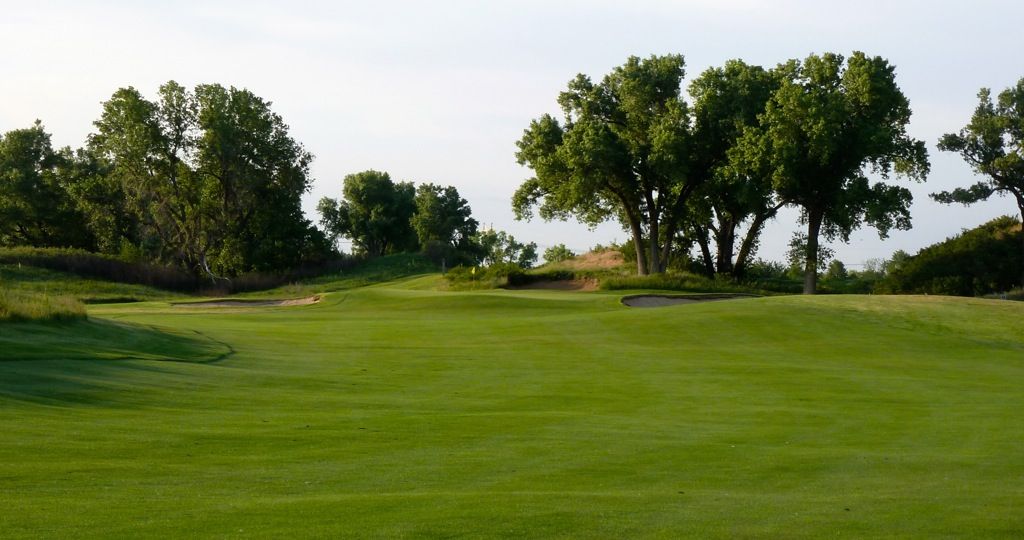 Prairie Dunes' 13th
Prairie Dunes' 13th - Blind/shorter vs. clear view and into slope of green
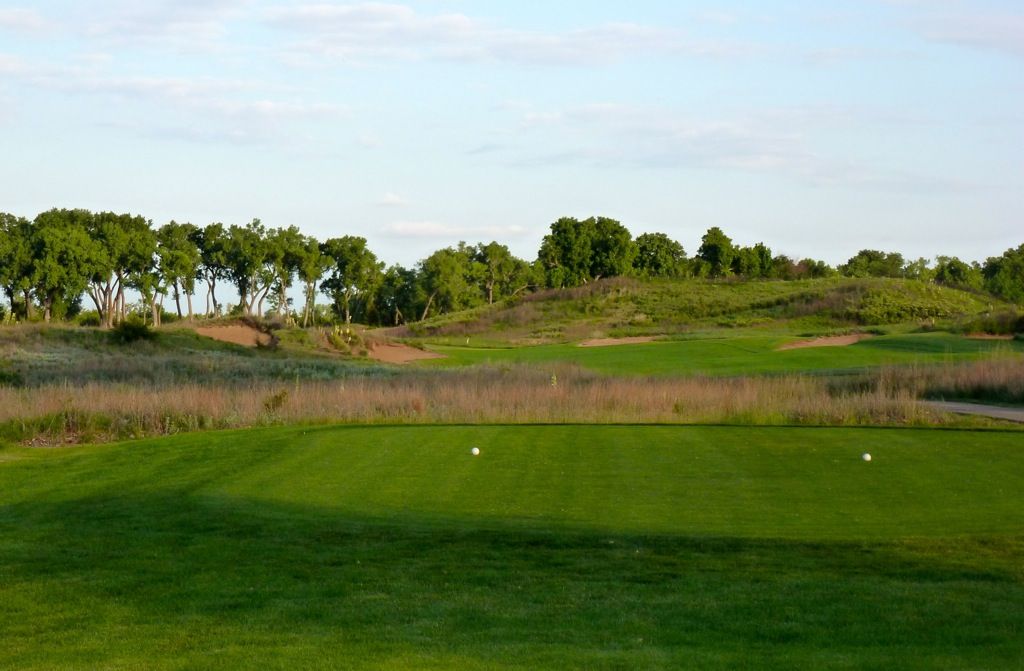
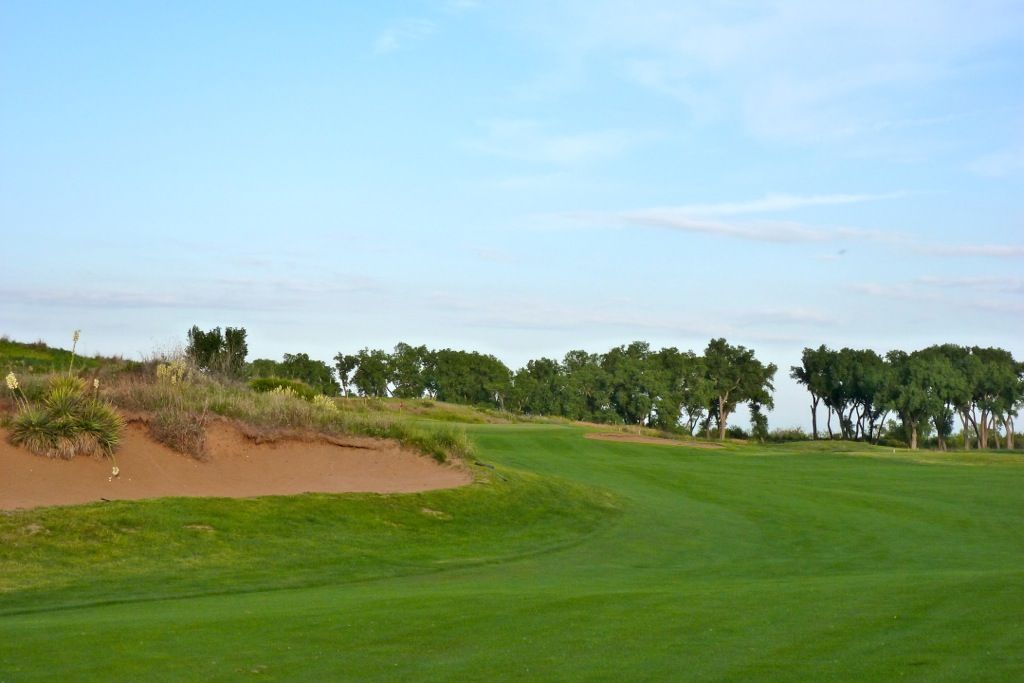
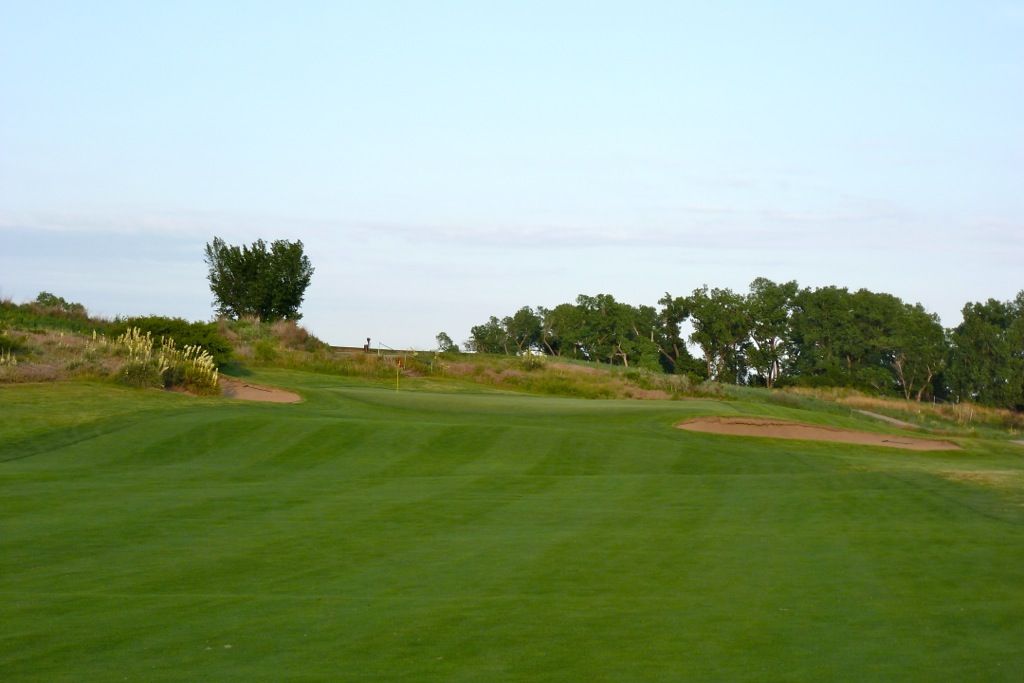 Prairie Dunes' 16th
Prairie Dunes' 16th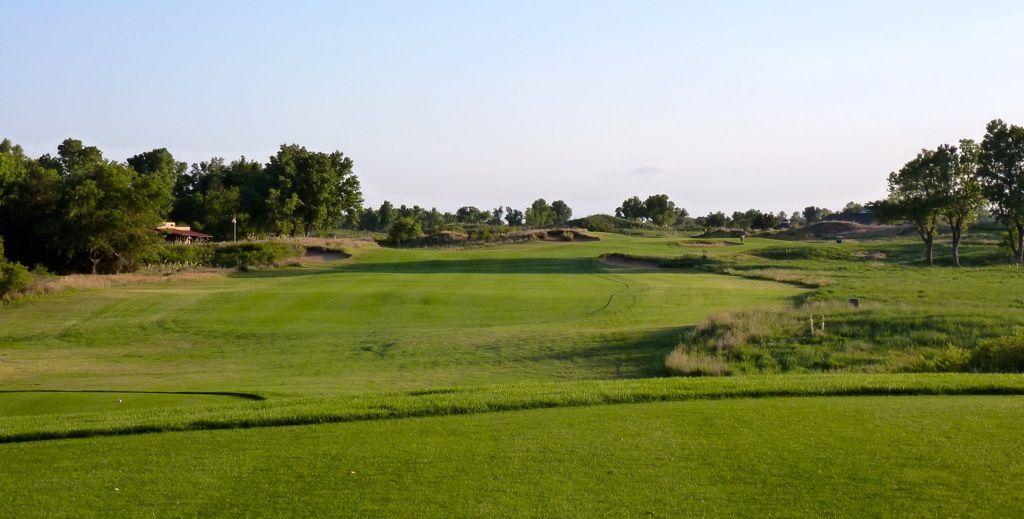
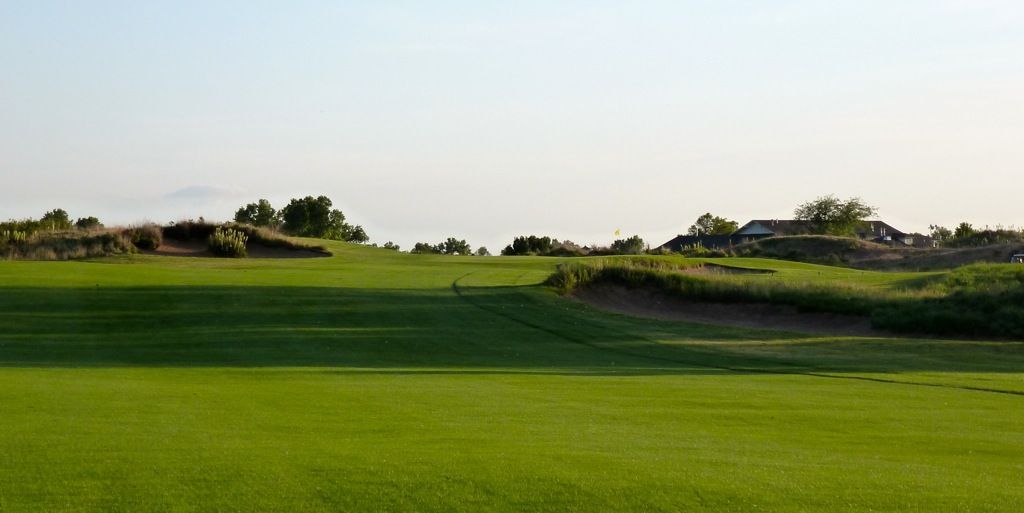
 Prairie Dunes' 18th
Prairie Dunes' 18th - Not a perfect fit, but approaches from the outside of the dogleg are played into the slope of the green
